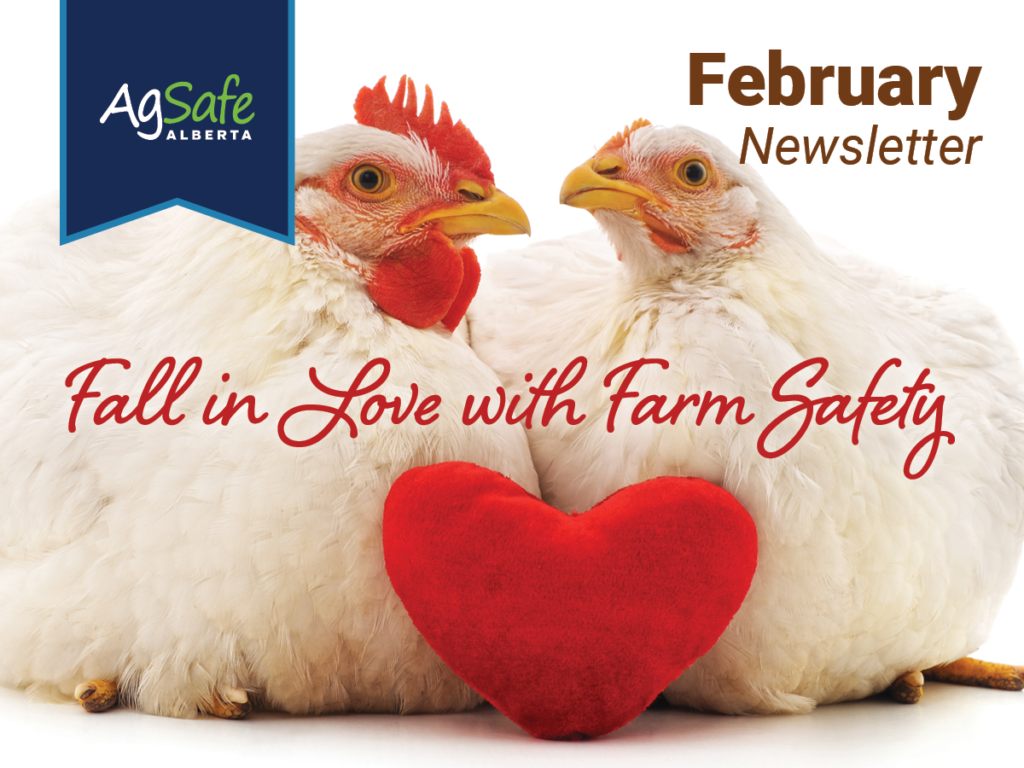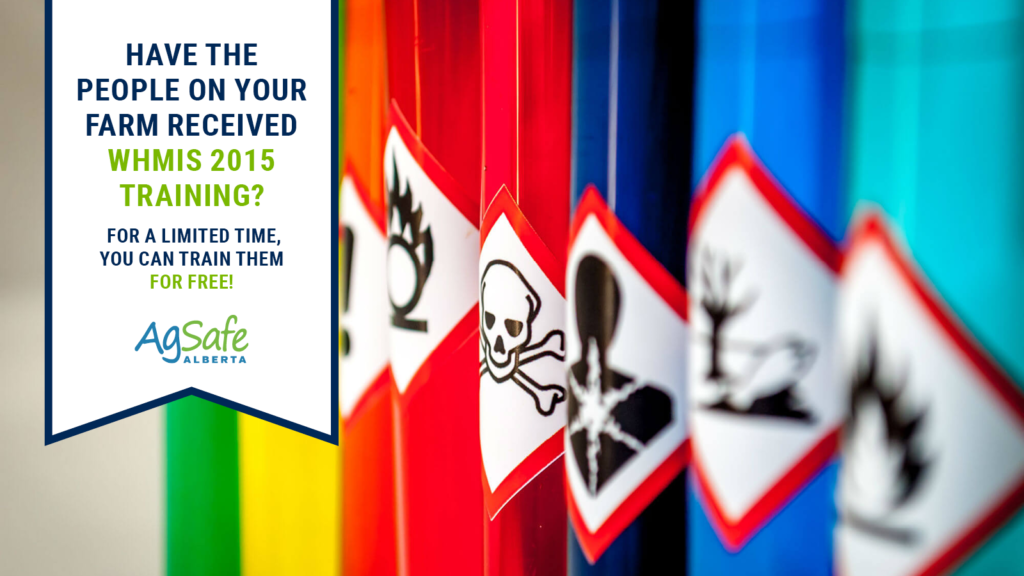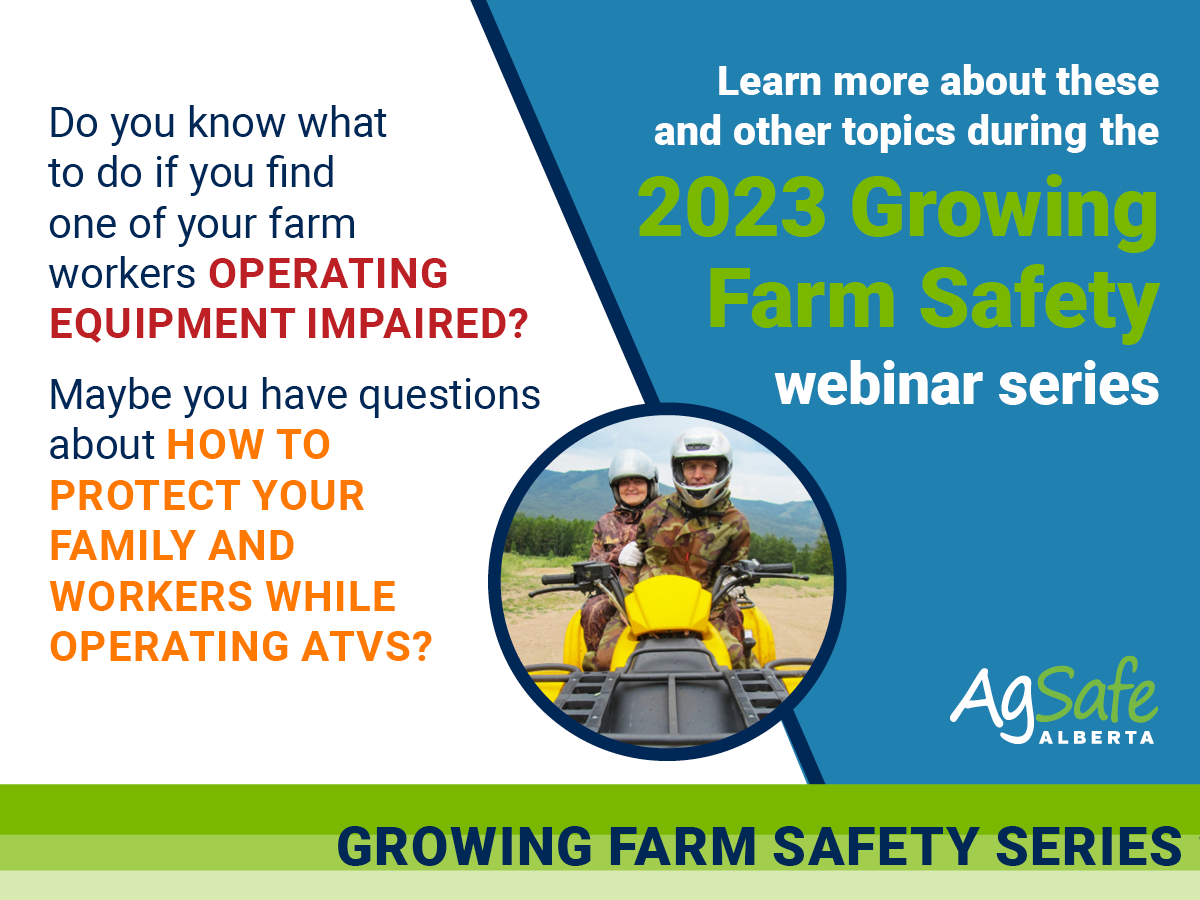
IT HAPPENED TO MANY OF US
2022 Alberta Occupational Health & Safety Contact Highlights
Source: Alberta Labour / Alberta Occupational Health & Safety
The information in this article was obtained from a report AgSafe Alberta received from Alberta Occupational Health and Safety regarding contact points that occurred in 2022. Keep in mind that these numbers do not take into account family farms or incidents where it was a family member who was involved. Also note that in some cases, such as when a contractor is performing work on a farm, if a serious incident occurs it may go under a WCB industry code that is outside of agriculture.
Based on the information in this report, it appears that fatalities were limited to the 01600 Hay/Grain/Crop Farming industry code during this time period.
| Type of OHS Order | Number of OHS Orders* |
| Demand | 18 |
| Notice to Produce | 2 |
| Order | 51 |
| Stop Use Order | 1 |
| Total Number of Orders | 72 |
*Due to the limited amount of clarifying information provided, it is possible that some of these may belong to groups outside of agriculture, such as greenhouses/market garden or livestock auctions/stockyards.
The following is an overview of what producer groups saw in the OHS Order(s) they received.
Note that not all producer groups were noted in all sections of the report received and, as such, AgSafe Alberta cannot verify whether or not those groups received an OHS order or if some other form of contact was or was not made in 2022.
| Producer Group | What was in the OHS Order(s) |
| 01200 Beef Producers | 100% of the items noted in the order(s) related to complying with what is required of an employer when it comes to serious injuries, illnesses, incidents. Click here to learn more about what is required of an employer following a serious injury, illness or incident. |
| 01201 Feed Lots | 25% of the items noted in the order(s) related to complying with what is required of an employer when it comes to serious injuries, illnesses, incidents. Click here to learn more about what is required of an employer following a serious injury, illness or incident. 20% of the items noted in the order(s) related to every person on the farm and the farm employer providing proof of identity upon request by an OHS officer and the inspection being or to be conducted by an OHS officer. Click here to learn more about proof of identity and inspections by an OHS officer. The remaining 55% of the items noted in the order(s) related to the obligations of prime contractors, health and safety committees and representatives, worker training, and violence and harassment. While the information received was limited, should you have questions related to one of these areas, please email us at info@agsafeab.ca. |
| 01206 Riding Academies/Horse Stables | 100% of the items noted in the order(s) related to the inspection being or to be conducted by an OHS officer. Click here to learn more about complying with an OHS inspection. |
| 01403 Fishing/Fish or Fur Farms | 50% of the items noted in the order(s) related to adequate hazard control/protecting workers from the hazards in the workplace; remember, employers have an obligation to protect the health, safety, and welfare of their workers as far as reasonably practicable. Click here to learn what these employer obligations are. The remaining 50% of the items noted in the order(s) related to health and safety committees & representatives and emergency preparedness & response. While the information received was limited, should you have questions related to one of these areas, please email us at info@agsafeab.ca. |
| 01600 Hay/Grain/Crop Farming | 47% of the items noted in the order(s) related to the obligations of an employer to protect health and safety. Click here to learn what these employer obligations are. 24% of the items noted in the order(s) related to the inspection being or to be conducted by an OHS officer. Click here to learn more about inspections that are carried out by OHS officers. 18% of the items noted in the order(s) related to complying with what is required of an employer when it comes to serious injuries, illnesses, incidents. Click here to learn more about what is required of an employer following a serious injury, illness or incident. The remaining 12% of the items noted in the order(s) related to health and safety committees & representatives. Click here to take AgSafe Alberta’s Effective Health and Safety Committee Awareness Training course or the Effective Health and Safety Representative Awareness Training course. |
Register For Our Growing Farm Safety Webinar Series Before Time Runs Out

Agricultural Fitness for Duty: Impairment in the Workplace Basics
Feb. 15, 2023 at 1 p.m. MST
Dan Demers, BSc., C-SAPA
CanAmm
Impairment in the workplace comes in many forms and presents genuine risks to workplace safety and the public. Agriculture has multiple challenges in addressing substance use and the safety implications; however, these challenges are not unique. Many agricultural operations are family-run or have very few employees on site. In operations with a small group of trusted staff, the hard lines on safety can blur, especially when substance use is at the issue’s core. This session will review the critical requirements necessary to address impairment in the workplace, highlighting how other safety-sensitive industries handle these matters and the challenges that cannabis legalization poses for the agricultural industry’s workplace safety.

ATV-UTV Safety for Women
March 8, 2023 at 1 p.m. MST
Dan Neenan
Director, National Educational Center for Ag Safety
Agriculture ranks among the most hazardous industries. Farmers are at very high risk for fatal and non-fatal injuries, and farming is one of few industries in which family members (who often share the work and live on the premises) are also at risk for fatal and non-fatal injuries. ATVs and UTVs are found on all types of farms; they are useful for agricultural work, but they also pose serious hazards to operators and passengers. Studies indicate that injured ATV/UTV passengers are more commonly female and youth and that helmet use is significantly lower for passengers. The focus of the training would be on ATV/UTV maintenance and safety features, personal protective equipment (PPE), load and weight considerations, operation on public roadways, as well as employee training and considerations for working alone.

Farm Safety and Sustainability
March 21, 2023 at 1 p.m. MST
Monica Hadarits
Executive Director, Canadian Roundtable for Sustainable Beef
The three pillars of each sustainability program are the 3P’s (People, Profit, Planet). We often hear a lot of talk about the planet aspect. Join this webinar to hear more about the people side of the equation and why safety is a key component to ensuring your farm’s sustainability.
SAFETY FIRST, LAST THOUGHTS
Planning your next pesticide Purchase
The warmer weather we started January off with has everyone eager for the next growing season, which will be here sooner than we think! If buying pesticide is on your “to do” list, remember to choose the pesticide formulation that will be the most effective while minimizing any potential harmful effects.
Consider:
- The risk to the person applying it, bystanders, and any organisms that are not intended targets of the product.
- How harmful it is to the environment and wildlife.
- The potential for damage to crops.
- The safety equipment and application equipment to be used.
When it comes to the form the pesticide is in, other points to remember include:
- Skin will absorb liquid more easily than it will absorb powder.
- Formulations (i.e., emulsifiable concentrates) may be absorbed more easily than water solutions.
- Some adjuvants may increase the amount of pesticide that sticks to or spreads on the skin, in turn increasing the amount of pesticide absorbed by the skin.
- The smaller the particle size used, the more hazardous it is likely to be.
- A fine dry dust will easily enter the air where it may be breathed in or land on and contaminate nearby surfaces.
- A pellet will produce less dust that can enter the air and reduce the amount that may get breathed in or contaminate nearby surfaces.
Get yourself and your farm team ready to go! Take AgSafe Alberta’s online WHMIS 2015, Pesticide, Veterinary Drug and Medicated Feed Course. Go to agsafeabseed.ca to take this and some of our other courses designed specifically for the people living and working on farms.

For a limited time only, you can take our WHMIS 2015, Pesticide, Veterinary Drug and Medicated Feed Course for FREE using promo code CARE23!
CONTACT US
For general inquiries: info@agasafeab.ca /403-219-
For our hotline for incidence assistance: 1-833-9AGSAFE


